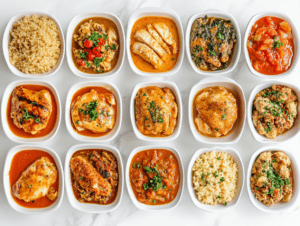
This week, for our Adventure-a-Week challenge, our adventure doubles as a craft project as well. I was in a used book store one time and saw a book on “rubbings” and it captured my attention, and we gave it a try for this week’s adventure. So grab your art supplies and head outside!

For this week’s activity you will need…

– Paper. And plenty of it. I found that I like using very thin paper, personally. I bought a cheap sketchpad and I really liked the texture and thinness of the paper for this project.
– Rubbing Materials. There are all sorts of rubbing materials you could use! Take a bunch with you and try them out to see what you prefer. Graphite, colored pencils, pastels, chalks, wax, you name it! Although I didn’t expect it, I ended up preferring crayons for larger pieces. Colored pencils were nice for more detailed/smaller items.
– A Kneeling Pad. If you’re going to be crouching on sidewalks and streets making your rubbings, it’s a little more comfortable if you have something under your knees.
– A Folder. Or something to put your finished rubbings in to prevent them from getting bent up and wrinkled.
– Masking Tape. You need for your paper to lay very still while making a rubbing, and I found masking tape to work very well. It’s especially helpful for working on vertical surfaces, of course, but even on a flat horizontal surface, it is a good idea. Be aware, though, that depending on the kind of paper you are using, the area with the masking tape may need to be trimmed away. This is usually fine because of the nature of rubbings, often the edges are not the most attractive part, anyway, and can be cut away.
– A Tote. Or something similar to carry all these supplies!

You could do a variety of themes out of rubbings – such as, a nature theme where you make rubbings of leaves and feathers and other natural objects. But I wanted to do a more urban/industrial theme. Of course, this works best if you live in a fairly urban area … which I do not. However, even so we were able to find some interesting subjects for rubbings. Try man hole covers, engraved signs, and plaques for more definite rubbings, or try brick walls, metal plates and concrete for more textural subjects. Be aware, though, that you need to know what you are allowed to make rubbings of – it is illegal some places to make rubbings of gravestones, and, of course, you shouldn’t wander onto private property to make rubbings. Still, it is an interesting way to wander around a town, looking for interesting spots to make into rubbings – you notice all sorts of things you wouldn’t have seen before.




You can even make a collection of small rubbings all from different aspects of one particular subject. It might be fun to make rubbings this way, put them together and see how quickly people can figure out what it was. I’m sure you can easily tell what this was!

A few tips on making rubbings…
Don’t use a sharp point of whatever art medium you are using, but rather use a blunt point or use it on an extreme angle.
Start out marking lightly – if you press too hard, you’ll just be drawing on top of the surface, not really picking up the texture. But if you start lightly and gradually get to darker/harder strokes, you’ll get a better feel for what works well.
While making the rubbing, try to keep your hand moving in the same plane. In other words, if you’re rubbing right to left, don’t suddenly switch to up and down, or you’ll probably end up with some unattractive competing lines.
This is probably an activity better for adults or older children … small children can have fun just drawing on their pages, but probably will have trouble gently pulling the textures into relief on the page.
Go exploring and think outside the box on what you can make into rubbings!
I hope you enjoy it!
Have you ever made rubbings at home, for instance of pennies and household items?
What about heading out and about to look for more unusual items to turn into rubbings?
Leave your thoughts and comments below!



